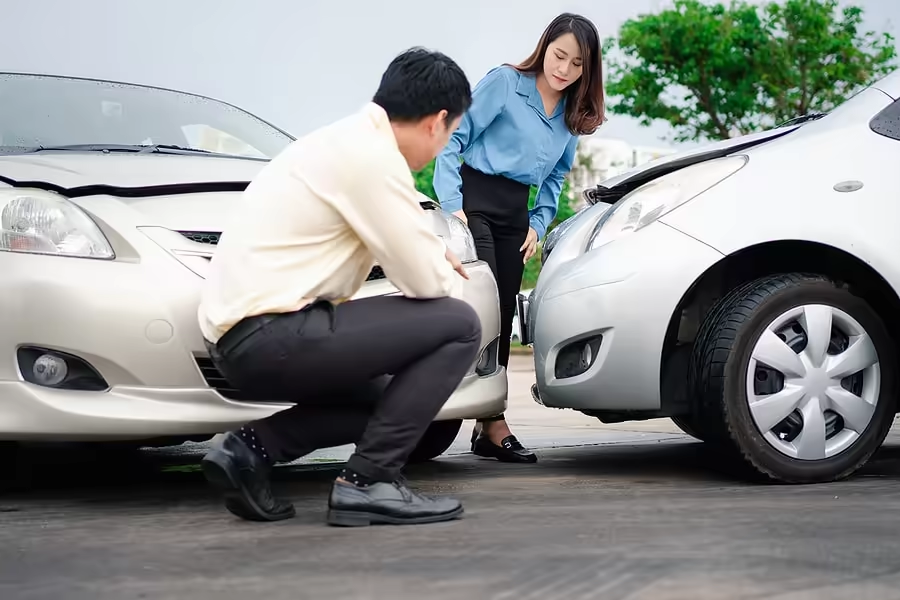Navigating the aftermath of a car accident can be particularly daunting when it occurs in a company vehicle. In California, the added complexity of employer-owned vehicles introduces a range of legal and procedural steps that must be meticulously followed. Whether you're an employee who regularly drives a company car or someone who's found themselves behind the wheel in a one-off situation, knowing the right actions to take immediately after an accident not only ensures your safety but also protects your legal rights and responsibilities. This guidance is crucial in managing the incident effectively and mitigating any potential repercussions that could arise from such unfortunate circumstances.
For employees involved in a vehicular accident while on company time, the steps taken in the immediate aftermath are pivotal in shaping the resolution of the incident. From ensuring the well-being of all parties involved to securing the necessary documentation for legal and insurance claims, each action must be executed with care and precision. The following overview serves not only to instruct involved parties on how to proceed after an accident in a company vehicle but also aims to provide peace of mind by outlining clear procedures to follow, thereby simplifying what can often be an overwhelmingly complex process.
1. Ensure Safety First
After any car accident, the first priority is safety. Check yourself and others for injuries. If anyone is hurt, call 911 immediately. Do not attempt to move injured individuals unless there is an immediate danger, such as a fire. If it's safe to do so, move the vehicle out of traffic to avoid further accidents.
2. Report the Accident
Once safety is ensured, call the police. A police report is crucial, especially in company vehicle accidents, as it provides an official account of the incident. This report will be valuable for insurance and legal purposes. In California, if the accident results in injury, death, or significant property damage, you are legally required to report it to the California Highway Patrol or the police department where the accident occurred.
3. Exchange Information
Exchange contact and insurance information with the other driver(s) involved. Be sure to get their names, addresses, phone numbers, driver’s license numbers, license plate numbers, and basic insurance information. If there are witnesses, try to get their contact information as well, as their accounts may be helpful later.
4. Document the Accident
Take photographs of the accident scene, including all vehicles involved, any visible damage, and road conditions. This visual documentation can help clarify how the accident happened and the extent of the damage. Also, make notes about the accident, including the time, location, and your account of the events.
5. Notify Your Employer
Inform your employer about the accident as soon as possible. They will likely have a protocol for handling such incidents. Your employer’s insurance may cover the damages, and they may need to file a claim with their insurance company. Follow any specific instructions they give you regarding the accident and cooperate fully with their procedures.
Related: Why You Should Never Settle a Car Accident Claim Without a Lawyer
6. Seek Medical Attention
Even if you feel fine, it is advisable to seek medical attention after an accident. Injuries caused by car accidents can be latent, with symptoms appearing hours or even days later. A medical record will also serve as an important document if you later need to claim for injuries.
7. Follow Up
After the initial reports and documentation, follow up with your employer and their insurance company. Keep records of any medical treatments and expenses related to the accident. Stay in touch with your employer’s HR department or your direct supervisor to ensure all necessary paperwork and procedures are completed.
8. Consult Legal Advice
If you have any concerns about your rights and responsibilities, it might be wise to consult with a local and experienced car accident attorney. This is particularly important if there are any disputes about the accident or if you're facing potential legal issues.
Related: Steps to Take When You Get into a Car Accident in Brisbane: Legal Guidelines
Conclusion
Accidents in company vehicles can complicate the usual procedures due to the involvement of employer-owned property and potential liabilities. By following these steps diligently, you can ensure that the accident is documented thoroughly, your rights are protected, and the aftermath is managed smoothly in accordance with California laws and regulations. Remember, safety and prompt reporting are key in handling such situations effectively.


